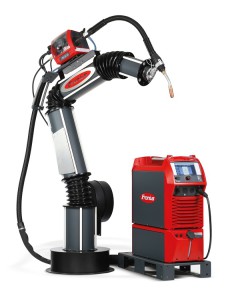 Fronius engineers have drawn on the power source’s consistently implemented digital system architecture and new communication technology features to cover and address all the major influencing factors crucial to the welding process with high definition and reaction speed. The result is an exceptionally stable arc and optimum welding results.
Fronius engineers have drawn on the power source’s consistently implemented digital system architecture and new communication technology features to cover and address all the major influencing factors crucial to the welding process with high definition and reaction speed. The result is an exceptionally stable arc and optimum welding results.
A crucial role is played by the modified dip transfer arc (LSC – Low Spatter Control) and the modified pulsed arc (PMC – Pulse Multi Control), which give the welder a significantly higher level of control over the arc. The user is also supported by brand new stabilisers: while the penetration stabilizer ensures that the penetration remains constant – even if stick out fluctuations occur – by adjusting the highly dynamic wirefeeder, the arc length stabilizer keeps the arc at an optimum length when the arc geometry (e.g. due to a change in the weld seam profile) or weld pool temperature changes.
As a result TPS/i Robotics not only makes the welding process considerably quicker than ever before, but also enhances the weld seam quality. One of the visible improvements is the minimal amount of spatter produced. Another benefit of the power source’s consistent digitalisation is the continuous collection of information on the current status of the power source and on every weld seam, which is made available to the user. This detailed data can be used to monitor, analyse and document the welding process. Using the central server unit (WeldCube), the data gathered from several power sources via their Ethernet interfaces can be combined and managed from a company-wide perspective.
Fronius is also forging new paths in the area of communication between the welding system and robot control. Like all other process control components, the TPS/i system’s new robot interfaces are incorporated into the system bus architecture and are therefore able to provide data relevant to the robot control in real time.



